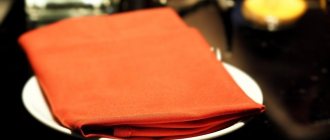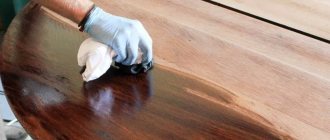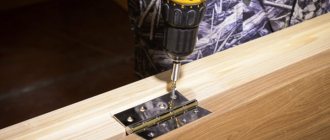Before you start laying out your cutlery and utensils, you need to understand the surroundings. It is also important for a special occasion.
- The generally accepted distance between chairs is from 50 to 80 cm. It is important that all seats are approximately equal in area for harmony.
- Make sure the table is full of dishes. It should only contain food that corresponds to the moment of celebration. For example, only hot dishes or only dessert. Overload creates chaos, which looks ugly and not solemn.
- Decorations, table settings, and food service vary depending on the event. Think through everything to the smallest detail. The timing, quantity and quality of food, as well as many other factors, influence the decor and setting appropriate for the occasion.
- Before the event, you need to resolve all organizational issues, make sure that the tablecloth is in good condition, get and count all the cutlery and dishes, find the required number of chairs according to the number of guests. On the day of the celebration, wipe all the dishes so that there are no stains or dust on them.
Sequence of table setting
The table should be set according to the following plan: tablecloth; dishes; cutlery; glasses, wine glasses, glasses; napkins; table decoration. To begin with, table setting may seem like a really complicated science to some, but after some time, when setting the table according to the rules becomes a habit, it will seem to you that this task is easier than ever!
The tablecloth must be perfectly ironed and have a presentable appearance. There is nothing good about setting the table with a crumpled tablecloth or oilcloth. The smoothed tablecloth, or rather its corners, should fall opposite the table legs, covering them evenly.
Serving rules and choice of dishes
There is no need to invent the obvious when thinking about what table setting items should be purchased, how to use them and arrange them. The norms of etiquette in matters of festive and everyday serving are a practical system that has been worked out over centuries, and which is easier to use at home than it seems.
Tips for everyday table setting:
- use coasters. They look elegant and protect the tablecloth from unnecessary stains;
- deep plates for first courses are required;
- Place a plate for the side dish under the container for the first dish;
- arrange your utensils in advance. This will save you from unnecessary fuss at the table;
- don't forget about napkins. Use both paper and fabric ones for serving.
Festive table setting
Plates placement
The next step is arranging the plates. There is probably no need to remind you once again that all dishes must be clean.
Serving principles:
• The snack plate should be placed opposite the chair, two centimeters from the edge of the table. • If several dishes will be served, then place a plate with a larger diameter under the appetizer plate. • If there is a first course, there should be a broth pot on the dinner plate. • If desired, place a plate on the table under the bread.
How to properly place dishes on the table
Source: @ta__diana
- If the appetizer dishes are large, they are placed in the center. Fish is served in an oval bowl, and meat in a round one.
- The more guests, the more gravy boats, pepper shakers, and salt shakers there should be.
- Bread bins should be placed at the edges of the table.
- The tureen must be large and very beautiful, because from it the hostess pours the dish into each plate. Or this function is performed by a waiter.
- The hot dish should also be in the center and placed on a large platter. During dessert, there are cakes in spacious plates, sugar bowls, bowls of fruit and plates of pastries.
Arranging cutlery
Cutlery should be 10mm apart from each other and the plate.
• The fork is on the left and the knife is on the right, as is the spoon. • The fork should be with its teeth up and the knife with the blade facing the plate. • If there are more than three dishes on the menu, then you do not need to lay out all the cutlery; they should be taken out when needed. • With the plate there should be a fork and a knife, after them for fish, then a knife and fork for various salads. • A spoon can be placed instead of a fish fork.
Rules for being at the table
When in a catering establishment or visiting, you must follow established table etiquette. This set of rules and regulations explains how to use cutlery, how to sit at the table, and how to use a napkin. Following simple principles allows you to win over your dining partners if it is a business lunch or dinner. Each rule is easy to remember:
- A linen napkin is placed on the lap at the beginning of the ceremony. It is used to blot lips and wipe fingers.
- If you drop a napkin on the floor during lunch, you should call the waiter and ask them to bring a clean one for a replacement.
- Sitting at the table, place your hands on its edge or on your knees. The elbows are kept slightly pressed to the body.
- When serving a dish, they do not smell it, do not separate it into small and large pieces, putting them in different directions.
- In a restaurant, it is not customary to reach across the table for food. According to etiquette, you should ask your neighbor for help.
- When passing food on a plate to another dinner participant, it is placed on the table and not given into the hands.
- In response to a request to pass salt or pepper, they take both items on the stand without separating the pair.
- In cultural behavior, it is unacceptable to spit out an unchewed piece onto a plate or spoon. For this purpose, a paper napkin is brought to the mouth and hard food is carefully removed.
- During a private reception, politeness obliges you to try the hostess's signature dish. All you have to do is taste it.
- Correct, strict etiquette does not allow drinking from a neighbor's glass, even if it is a close relative.
- According to the rules for using cutlery, moving your hand with a fork or spoon away from you is not approved.
During lunch, it is not customary to laugh too loudly, talk, or make sounds that are unpleasant for your dining companions.
There are a number of table manners that both adults and children should adhere to.
Before eating, place a napkin on your lap
There is a separate cutlery for each dish
Glasses and glasses
As you know, there is a glass for each type of drink. Your task is to place them correctly on the holiday table. Glasses are usually located to the right of the plates in one line at an angle of 45 degrees to the edge of the table.
Since each type of drink is also served at a specific time during the meal (aperitif, main drink, dessert drink, digestif), the glasses are removed along with the plates and cutlery. The only type of glass that always remains on the table is a water glass. Glasses should be placed in the order in which drinks are served, with the farthest glass being used first.
Rules for arranging dishes for non-alcoholic and alcoholic drinks:
• The water glass should be to the right of the center of the plate. • Even further to the right is a container for alcoholic drinks.
The complete table setting includes the following glasses:
- Water glass
- Champagne glass
- White wine glass
- Red wine glass
- Cognac glass
- Vodka glass
- Liquor glass
Each of these glasses has its own unique characteristics that allow it to fully reveal the taste and aroma of a specific drink. Therefore, use appropriate glasses for all drinks served!
Fork etiquette
In addition to the usual forks intended for main courses, fish and desserts, there are many other varieties that differ in the thickness of the teeth, their number and length:
- fruit (has three teeth, small in size);
- for lobster (two short cloves);
- for the snail (two long, slightly curved teeth);
- to oysters;
- as a component of salad tongs.
Types of forks for various dishes.
They are served only if the guest definitely wants one of the listed dishes.
Using a fork for other purposes is a sign of bad taste.
How to eat food with a fork
There are 3 main ways to hold this item according to etiquette.
- The thumb and middle finger are grasped at the end of the handle, and the index part is located along the object, helping with pressure. In this case, the fork stands on its edge, touching the plate. Often this must be done with dessert, it is soft.
- The same position of the fingers, only in the middle of the object and the teeth “look” down. Then the index finger can better help when pressing and piercing meat and other hard pieces of food.
- The fork is taken like a regular ballpoint pen and positioned so that it is convenient to scoop up the soft part of the meal.
The rules of etiquette include, in particular, the ability to use cutlery correctly.
It usually takes a little practice to master and get used to holding this item correctly. But then this option will become even simpler than the others.
Do not forget that under no circumstances should utensils be placed on the table if you have already used them.
How not to use a fork
It is unacceptable to use other positions in the hand, as well as to make sounds while touching the utensils. The same goes for the knife. If it is inconvenient to hold it in your left hand all the time, then the American version of etiquette allows you to transfer the device to the other hand when the knife is not needed.
Cutting with a knife on the left is considered inappropriate, as it puts others at risk.
Additional decorations for serving
The decor should not be conspicuous; it complements the serving of dishes. Inappropriate:
- high compositions;
- vases with huge bouquets blocking the view;
- strong-smelling bouquets; guests may be allergic to them.
Decorate with napkin holders and candlesticks. Originally folded fabric napkins are an ideal option for decorating a formal table. Flowers from vegetables and fruits, edible compositions are appropriate for any dinner, they have a place on the dessert table.
A win-win option is to use flowers. Usually they are placed in the middle of the table - it can be a bouquet or composition.
Knowing the secrets of serving, you can turn a traditional meal into a wonderful meal, where everyone will enjoy not only the food, but also the contemplation of the feast. It's so easy to give joy to your loved ones! Make every family lunch and dinner special.
Fundamental Rules
Whatever meal requires preparation, there are a number of recommendations that are followed in any case:
1. Any preparation begins with selecting a tablecloth. For a special celebration, it is better to use a snow-white or plain fabric. For tea drinking, you can take a color model. The size of the tablecloth depends on the dimensions of the tabletop. It is accepted that on the longer side the canvas should hang 15–25 centimeters. The cut may be longer at the end. Covers for round tabletops can hang around the entire perimeter in the same range of numbers - no more than 25 centimeters.
2. The dishes are always arranged in the order in which the food is served.
3. The main plate is placed directly in the center relative to the seat.
4. Proper serving of cutlery requires that knives and spoons be placed on the right side, and forks on the left.
5. The blades of the blades always point in the direction of the cookware.
6. A vessel with drinking water is placed above the knife. Nearby - one or several glasses, depending on the number of drinks. Arrangement order: for water, separate vessels for sparkling, red and white wines, stack.
7. If the treats are Italian, a plate for baked goods must be used. It is placed so that it is easy to take bread with your left hand.
How to put a knife and fork on a plate after eating
In the modern world, there are some rules of dining etiquette that have been developed over many years; in addition, they are slightly different when comparing America with Europe. Let's say, in the latter, every time during a meal, the fork is in the left hand, and the knife, accordingly, is in the right. In relation to America, it is allowed to transfer the fork to the right hand at will.
In the modern world, there are some rules of table etiquette that have been developed over many years.
I'm waiting for the complaint book
If you use the combination “Finished the meal” (knife and fork parallel to each other with a large distance between the utensils) and rotate it 180 degrees on the dishes, you get a combination that means that the guest is so dissatisfied with the dinner that he demands to bring a book of complaints. Waiters must quickly respond to such a sign and bring a complaint book. It will be a favor for the next guests.
Serving for a large breakfast with hot dishes
Let's look at the situation with fried eggs and toast, although there may be porridge instead, which will require a different plate shape and an additional tablespoon. The main plate is placed in the center of the intended location. A bread (pie) plate is placed at the top left; its size is usually 18 cm in diameter. A tea (coffee) pair is placed at the top on the right side. Please note that a teaspoon is placed on the edge of the saucer, a sandwich knife on a pie plate.
Arrangement of hot breakfast equipment
Spoon
If everything is more or less clear with a knife and fork, we use them several times a day, then a spoon is a rarer guest on the table, so we will dwell on it in more detail. It should be held in your right hand and used if there is ice cream, soup, broth, mashed potatoes and other liquid or soft food on the table.
When you eat soup, scoop it into a spoon with movements away from you (and not towards yourself, as we are accustomed to since childhood), relax your wrist and twist it, because if you move inside the plate with a straight and tense hand, the spoon will hit the sides and make noise. unpleasant sounds. These are the sounds at the table that you should avoid.
Never clench the spoon in your fist, do not wave it at the table to point at something, eat not from the tip, but “sip” (silently, of course, no squelching sounds!) from the side, and do not take a full spoon of soup, limit yourself to a small "puddle" in a spoon. By the way, it would be nice if you leave a little soup on the bottom of the plate, but if you still want to finish eating, then you need to tilt the plate away from you.
When eating soup, do not be tempted to lean towards the plate, keep your back straight and bring the spoon towards you, not yourself towards the spoon. Oops, we hope you're not wearing white pants!
How to eat pasta correctly?
By the way, here is a controversial issue related to the spoon at the table: how to eat spaghetti? Italians say that only hillbillies eat pasta with a spoon, but in Moscow for some time it was very fashionable to ask for a spoon with a plate of spaghetti, and in restaurants they already bring it by default. If you cannot eat pasta carefully (without stains and dirt, not only on yourself, but also on your neighbors at the table), then resort to using a spoon; in other cases, it is better not to use it.
How to set the table and is it necessary to do it?
In ancient times, guests gathered for a festive meal, according to the etiquette of that time, used their hands instead of cutlery to eat. In the richest palaces they wiped them on the hair of slaves, in simpler houses they used the hair of dogs running around, and in the poor ones they used their own hair. Then linen tablecloths appeared, and etiquette required removing fat from hands and faces using this linen.
But those times are long gone in history and now tablecloths are used to decorate, create a wonderful mood and unite all those gathered. On the most special occasions, anniversaries, weddings, snow-white tablecloths are intended for serving.
But it is quite acceptable to experiment and choose the coating to your liking. The classic rule is that the tablecloth should be in harmony with the curtains, furniture, match the colors of the table service and the theme of the festive feast.
A modern serving option is colored textiles, plain or with ornaments. To make the moment solemn, a crisp white runner is laid out on top of the base tablecloth.
On light-colored tablecloths, it is customary to place white and dark tableware with decor. Plain and patterned fabrics are allowed. It is desirable that there is no strong variegation in color, and the pattern is located along the edges. When choosing a dark-colored finish, tableware should be light in color.
The tablecloth should match the shape of the tabletop. Or the lower covering (skirt) corresponds to the shape and size, and the upper decorative one, located according to the owner’s plan.
It is desirable that the length of the overhang of the covering looks proportional and does not interfere with guests. It's good when the edges hang down by 25-35 cm, but a lot depends on the overall design.
When covering the tablecloth, take it by the ends, shake it and lower it to the surface, keeping an eye on the center. Carefully level, trying not to pull the corners.
Thick textiles are first spread on the polished or varnished surface of the table. You can place napkins under the plates.
Instead of a tablecloth or on top of it, they now put runners (runners, runners and stripes), napkins of various shapes and varieties, and mats.
In what order are the dishes served?
Consistent consumption of food affects appetite, enjoyment of food and communication with people. You should not get too carried away with a certain category of dishes; you need to leave room for the rest of the food. You can determine the approximate amount of food by the number of cutlery.
Standard sequence of serving dishes:
- Cold appetizers.
- Hot appetizers.
- First course.
- The second hot dish is fish.
- The second hot dish is meat.
- Dessert – sweet snacks.
- Fruits.
Snacks are also arranged in a certain order: fish, meat, vegetables and mushrooms, dairy.
The menu may be different, but the sequence should remain the same. It is allowed to remove unwanted items. In this case, the rest of the food is served in the same predetermined stages (i.e., if the hot appetizer is removed, it will still be followed by the first course).
About the sequence of serving dishes in the video:
What about the hands?
Some people think eating with your hands tastes better, but save those tricks for meals at home (preferably alone). However, according to the rules of etiquette, hands can and even should be used at the table. For example, when you eat bread, you need to take it with your hands, break it and put the pieces into your mouth. There is no need to bite it or torment it with a knife and fork.
You can also use your hands to pick up cookies, tiny cakes and some fruits because they don't need to be cut with a knife and fork and don't get dirty.
The Importance of Choosing the Right Table Color Scheme
When setting a table, the tablecloth is chosen according to the type of event. For everyday use, variegated or plain fabric with acrylic coating is allowed, the main thing is that it matches the colors of the dishes.
Shades of red stimulate the appetite, while cool blue tones pacify it. Yellow and orange create a good mood, green have a calming effect.
The principle of arrangement of cutlery: the dish that is served first is the farthest cutlery.
It is better to decorate a romantic dinner in dark colors so that burning candles look advantageous. There is no need for unnecessary details on the table that interfere with communication: vases with flowers, multi-tiered fruit stands.
A formal event requires moderate, muted tones and crystal tableware. Themed parties will be memorable if the tablecloth contrasts with the colors of the dishes.
Setting a holiday table is also an opportunity to show your creativity.
Original ideas
Modern table setting, especially for an informal evening, does not involve following strict rules. Therefore, you can switch your attention to the decor and decorate the table, as well as the room, so that it is pleasant for both you and your guests to be in it.
Lay out a beautiful tablecloth, lay out a bright runner, choose matching napkins, place flowers.
Advice! To get a more aesthetic result, try to combine the shades of dishes and decor. Example: setting a white table with blue glasses is complemented by blue napkins or a tablecloth with a blue print.
A beautiful table setting is a great way to set the mood for the evening before dinner even starts! They say that presentation can improve the taste of a dish: why not take advantage of this bonus, because as it turns out, serving is not that difficult.
What else needs to be considered?
When choosing products for a feast, it is worth considering the material from which they are made. Let's consider the features and advantages of different raw materials:
1. Wooden - used for out-of-town trips. With daily use, they quickly break down, as they easily absorb moisture and foreign odors. Wooden accessories are not always convenient and comfortable.
2. Plastic ones are also a travel option. They are strong, light, practical. They are taken along with lunch boxes and soup thermoses. Food-safe plastic is used for production.
3. Aluminum - were incredibly popular in Soviet times. Today, many studies prove the harm of this metal. But not everyone is ready to give up such products. Aluminum models are fragile, quickly change shape and shade.
4. Steel - the most popular and practical. It is based on a special stainless steel that does not react with acids, alkalis, or salts. Accessories retain their original appearance for a long time. They are safe for human health.
5. Cupronickel - consist of an alloy of nickel, manganese and copper. Similar objects began to be created 70 years ago. Nickel silver has been added to the modern formula. It is softer and contains zinc. Technologies make it possible to coat cupronickel with gold and silver.
6. Silver - the most expensive, are a sign of luxury and prosperity. Such accessories are quite heavy, so it is inconvenient to use them every evening. Silver is usually laid out during special, ceremonial occasions. The disadvantage of the material is the appearance of patina. This is a plaque that appears during the oxidation process. To remove it you will need special polishing agents.
What not to do in a restaurant?
There are a number of actions, the performance of which indicates a person’s low cultural level. This primarily applies to events and official receptions. Table etiquette rules prohibit:
- Call the waiter, addressing him on a first name basis.
- Talk about politics, religion, health, finances.
- Communicate loudly, interrupt.
- Use toothpicks. This must be done exclusively in the bathroom.
- Pick up food or cutlery that has fallen on the floor. It's worth asking the waiter for a replacement.
- Use the phone. It's better to turn on silent mode. If the call is extremely important, you can apologize to the interlocutors and warn them.
- Inform about diet, abstinence from alcohol. There is no need to draw attention to yourself in these matters.
- Hurry. Even in the event of severe hunger, it is necessary to wait until food is brought to all people.
- Cut and bite a large piece of bread. Etiquette rules require breaking off small pieces. They are placed into the mouth with their fingers.
- Place the bag on the table or chair. Restaurants usually have special coasters installed. When they are absent, the bag is hung on the back of the chair, the briefcase is placed on the floor.
- Pressing tightly against the table or sitting too far away. Only your hands can be placed on the surface.
Video about what not to do at the table:











